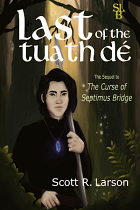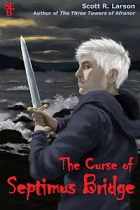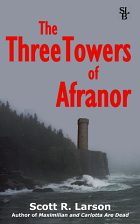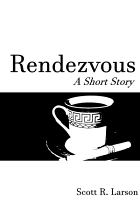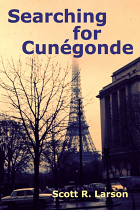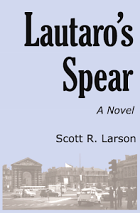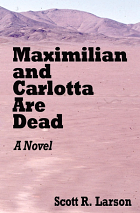Quackser Fortune Has a Cousin in the Bronx ★★☆☆
What a curiosity this movie is. The story of an unusual young man in inner-city Dublin, it functions admirably as a time-capsule-type record of what Dublin looked and felt like circa 1970. Many locations in the city center are captured as well as many hard-working Dublin actors. The only strange part is that it features in the title role, of all people, Gene Wilder. You could argue he is miscast, since the screenplay seems to assume the amiable but innocent Quackser (a childhood nickname substituting for Aloysius) is young and good-looking. In his late 30s at the time, Wilder looked like, well, Gene Wilder. Unwilling or unable to join his father at work in the local foundry, Quackser has made a living shoveling horse dung from the streets (from delivery horses) and re-selling it to people with gardens. One day his world outlook is broadened by a chance meeting with an impulsive and beautiful exchange student from Connecticut, played by a radiant Margot Kidder eight years before she became Lois Lane. In the course of their sort-of romance, Quackser will have to contend with modernization eliminating his livelihood and anti-working-class prejudice from the posh crowd at Trinity College. The screenwriter, Dublin-born Gabriel Walsh, had his own amazing story, involving unlikely emigration and career, which would make its own interesting movie. The director, India-born Brit Waris Hussein, has had a long career of TV movies and mini-series but is best known in our house as the man who directed the very first episodes of Doctor Who in 1963 and 1964. Among the cosmic coincidences that populate this endlessly intriguing flick is the presence of David Kelly as part of the gang in the local pub, actually John Kavanagh’s famous establishment (aka The Gravediggers) next to Glasnevin Cemetery. A year after this movie, Wilder would star as Willy Wonka in Mel Stuart’s adaptation of Roald Dahl’s Charlie and the Chocolate Factory. Thirty-four years after that, Kelly would play Charlie’s kindly grandfather in the Tim Burton version. (Seen 21 July 2017)
The Quare Fellow ★★☆☆
This 1962 film is based on Brendan Behan’s first play, originally produced in 1954. It is not a particularly faithful adaptation, eschewing much of the humor of the stage version in favor of a more straightforward indictment of capital punishment. The “quare fellow” of the title (the term is a common Irish usage for someone who has become a major topic of conversation) is a condemned prisoner hours away from his execution. We never see him, but he is the center of the entire drama. Our point-of-view character is a wide-eyed new prison guard, freshly arrived in Dublin from an island off the Galway coast and eager to serve society. He is played by American-born Irish actor Patrick McGoohan, just a couple of years before he would become world famous as the star of Secret Agent and The Prisoner. His mentor is a gruff but humane senior warder, played by Galway author and actor Walter Macken. There are a number of other colorful characters that we imagine Behan drew from his own prison experiences, but they get short shrift to make way for a soap opera plot involving the young warder’s affair with the condemned man’s wife, played by Syliva Syms. You could argue that the movie stacks the deck by making the prisoners largely humorous and benign, but it’s all academic in Ireland anyway since capital punishment was largely abolished a couple years after the movie came out and was banned altogether in 1990. The film was co-adapted by its German-born American director Arthur Dreifuss. (Seen 28 September 2014)
The Queen ★★☆☆
This 2006 film by Stephen Frears was showered with six Academy Award nominations, winning Best Actress for Helen Mirren in the title role. It is interesting to see this movie now, relatively soon after Queen Elizabeth’s visit to Ireland, which gave a different impression of the monarch and underlined how much time has gone by since the days in 1997 when many people in Britain went crazy (my take) over the death of Princess Diana. Indeed, the liberal newsreel footage used in Frear’s film reminded me of nothing so much as film coming out of North Korea after the death of the Dear Leader. It would have been easy for Frears and screenwriter Peter Morgan to do a hatchet job on Her Royal Highness, but like our point of view character (none other than Tony Blair, as played by the chameleon-like Michael Sheen) we come to appreciate her position and maybe see the value in the institution of the monarchy. Instead, it is the anti-monarchist Cherie Blair (Helen McCrory), who comes off looking silly and a bit out of touch. The main fascination comes from the feeling of voyeurism as we watch intimate moments among the royal family that would never be documented first-hand. We come to understand why the Queen was loath to leave Balmoral, as her life approaches something normal there. We see her walking around and talking to people quite casually, using a mobile phone and driving a Range Rover. A decade and a half after the events portrayed, the Queen still endures. And her prediction to Blair (made by the screenwriter with the benefit of hindsight) about his own eventual fall in popularity has long since come to pass. (Seen 29 December 2011)
Queer ★★☆☆
I know it’s too late for making Oscar predictions this year (not least because the Oscars were handed out nearly two weeks ago), but if I could go back in time, I’d dump poor Eileen Walsh (who certainly doesn’t deserve it) and pick instead Lesley Manville as absolutely the one who should have been nominated for Best Supporting Actress but wasn’t. (I do stand by my corresponding choice for star Daniel Craig, who erases any memmory we might have had of his 007.) She shows up in the last stretch of this mind-blowing dissolute metaphysical saga as a whacked-out scientist living deep in a South American jungle, and she is unrecognizable from any of the numerous other roles we have seen her play. She is a scary gun-toting viper-charming force of nature with no intellectual or psychological boundaries. She is also the climactic catalyst in a tale recounting a series of ever-expanding quests. Adapted with intense fealty from Willliam S. Burroughs’s once-controversial quasi-autobiographical novel (director Luca Guadagnino had been fixated on the work from the age of 20), the film follows Burroughs-alter-ego William Lee’s life in Mexico where his drug addiction runs little legal risk. His daily routine is a series of drinking sessions with other expats and perhaps making the occasional pass at someone who catches his eye. He finds purpose of a sort when his eye is caught by Eugene (Drew Starkey of Netflix’s Outer Banks), a young serious-minded navy veteran with a southern drawl. Eventually, Lee drags Eugene away on a land journey to Ecuador in search of a mysterious hallucinatory plant that he thinks might allow him to experience telepathy. And that’s the running theme of the often aimless narrative: the search for human connection in all kinds of complicated ways. In fact, it seems to be a running theme in Guadagnino’s movies generally, including Call Me by Your Name, Bones and All and his other movie from last year, the tennis romance Challengers. He drops into this film subtle references to Burroughs that are not actually in the book, including a hallucinatory scene where a William Tell re-enactment goes terribly wrong. (That is how Burroughs’s wife Joan Vollmer died). If you have the patience to stick it out, this is probably the best adaptation one could hope for (if you were hoping for one) of this book. It feaures a judicious use of special effects. Especially nice are subtle transparency touches that highlight the human connection theme. This suits the material better than David Cronenberg’s overwhelming images in 1991’s Naked Lunch. Also very good is the soundtrack, which includes a couple of songs penned by Burroughs’s friend Kurt Cobain. Strangely, in the end this flick reminded me of nothing so much as 2001: A Space Odyssey. It’s about a journey that is fraught with struggles and dangers and, in the end, becomes very solitary, ending up in a completely different plane of existence. Even the very final scene seems to mirror closely Kubrick’s classic. (Seen 13 March 2025)
Qui êtes-vous, Polly Maggoo? (Who Are You, Polly Magoo?) ★☆☆☆
I became curious about this odd 1966 French film when I first read about it in R.J. Jamison’s biography Grayson Hall: A Hard Act to Follow. I resolved to seek it out last month after coming across a funky/dingy pub named Polly Maggoo in the Latin Quarter during our visit to Paris. Clearly, this strange cult film is an object of fascination for more than a few people, even four decades after it was made. As a disdainful satire of the fashion world (an easy target even, or especially, back then), it is a progenitor of everything from Prêt-à-Porter to Zoolander to The Devil Wears Prada. It also takes on the media and, well, anything else that seems to have been bugging William Klein, the New York-born photographer, who directed this. Depending on your point of view, the incoherent and jumpy narrative structure either reflects a unique vision of reality or else the cast and crew were just making it up as they went along. Some sequences have a compelling quality about them, but they work in isolation rather than part of a whole. Rewards for latter-day viewers include a young Jean Rochefort—who has one of the all-time great cinematic faces and who can currently be seen in my neck of the woods as a straight man waiter in Mr. Bean’s Holiday—as the journalist making the titular Ms. Maggoo the subject of a pretentious weekly reality program. (The following week’s subject is Pope Paul VI.) The late, lamented Philippe Noiret is on hand as a reporter. Sami Frey plays a prince whose destiny may be linked with Polly’s. Or not. And Grayson Hall does a dragon lady turn as a thinly disguised version of Diana Vreeland. In the end, it’s all more interesting as a time capsule than a movie. (Seen 17 May 2007)
The Quiet Man ★★★☆
I swore I would give this a fresh viewing. And I finally have. At this point in my life, this 1952 movie looks completely different from the first time or two that I saw it. For one thing, the scenery is completely familiar since I now live in the neighborhood. But the story and the characters have more resonance for me now. Make no mistake, I am no Sean Thornton. I have no Irish blood in me and moving to Ireland was no sentimental homecoming. Still, it is amazing how well the film captures the dynamics of an American-Irish marriage. This labor of love by Irish-American director John Ford is essentially a cartoon-ish shaggy dog story, but that doesn’t mean it doesn’t have an awful lot of truth in it. Its portrait of small town life in the west, in which the community takes an outsize interest in the arrival of an apparent stranger and the personal affairs of a newly married couple rings all too true. Ford’s view of rural Irish life is largely idyllic, with the village embracing militant republicans as well as a Protestant reverend and his wife, and this view is not inaccurate. Still, some quaint features of the story compare grimly with current times. Ireland is doing some serious soul-searching these days about binge drinking and violence among its young men, and this fact gives the movie’s good-natured portrayal of drinking and fighting a bitter aftertaste. At the end of the day, however, this is still the definitive film about the tenacious hold that Ireland has always had on its American brethren. [Related commentary] (Seen 11 February 2003)















